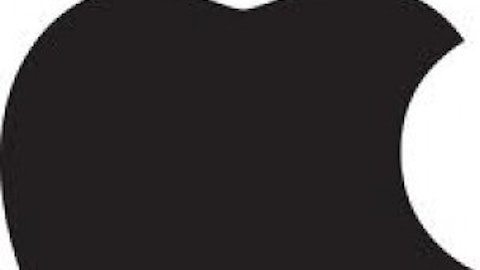
The numbers
Nokia Corporation (ADR) (NYSE:NOK) recently reported its first quarter earnings. In Q1 2013, Nokia had a net loss of €0.07 per share. At first glance it looks like Nokia took a step back in its recovery; after all, in Q4 2012 Nokia posted a profit €0.05 per share. However, Q4 is the holiday quarter, so a drop in profits from Q4 to Q1 is normal. In addition, year over year comparisons in performance are more important than quarter to quarter changes.
In terms of year over year numbers, Nokia Corporation (ADR) (NYSE:NOK) actually arguably had a better Q1 than Q4. Yes, in Q4 Nokia posted a positive EPS of €0.05. This was a big improvement over the negative EPS of €0.29 in Q4 2011. However, the 2011 number includes about €1 billion of impairment of goodwill, which is a onetime non-cash charge. In terms of non-IFRS numbers, which excludes special charges, Nokia’s EPS was flat year over year in Q4. The following table looks at Q1 and Q4 non-IFRS EPS relative to the same quarter of the previous year.
| Non-IFRS | Q1 2013 | Q1 2012 | Q4 2012 | Q4 2011 |
| EPS (€) | -0.02 | -0.08 | 0.06 | 0.06 |
As you can see, Nokia’s non-IFRS EPS, while still negative, improved from negative €0.08 in Q1 2012 to negative €0.02 in Q1 2013. That is two quarters of flat or year over year improvement for Nokia Corporation (ADR) (NYSE:NOK). In Q3, Nokia’s non-IFRS EPS dropped from positive €0.03 in Q3 2011 to negative €0.07 in Q3 2012.
However, the numbers for Q1 were not all good. Nokia’s revenue plummeted by 20% year over year. Regardless, net profit is definitely more important than revenue because it is the amount the company makes after costs are deducted.
All about the Lumia
Furthermore, Nokia had a solid performance in its smartphone business. While Nokia operates three business segments (Devices & Services, HERE, and Nokia Siemens Networks), Nokia’s future largely rests on a successful comeback in its smartphone business. In Q1, Nokia shipped 5.6 million Lumia smartphones. This is an improvement on the 4.4 million Lumia smartphones it shipped in Q4. The 5.6 million Lumias is impressive because Q4 is the holiday quarter and businesses usually experience a drop between Q4 and Q1.
It should be noted that Nokia Corporation (ADR) (NYSE:NOK)’s Asha phone shipment declined from 9.3 million in Q4 to 5 million in Q1. However, Lumia shipment numbers are more important because they run Microsoft Corporation (NASDAQ:MSFT) Windows Phone OS, and the Lumia 920 targets the high end of the market (Asha is mainly for the lower end).
Most importantly, Nokia expects the Lumia growth to continue. In its earnings release the company stated, “…Nokia expects the sequential growth in Lumia unit volumes to be higher than the 27% sequential growth in the first quarter 2013.” Moreover, Lumia shipments outpaced the overall smartphone market. Global smartphone shipments declined from 227.8 million in Q4 to 216.2 million in Q1.
Challenges
While Nokia Corporation (ADR) (NYSE:NOK) is making significant progress, the company still faces major challenges and significant risk. The biggest threats to Nokia are stiff competition from Apple Inc. (NASDAQ:AAPL)’s iPhone, and smartphones running Google Inc (NASDAQ:GOOG) Android. In Q1, Apple Inc. (NASDAQ:AAPL) shipped 37.4 million iPhones. In Q4, Android and iOS had 70% and 21% of total smartphone shipments worldwide, respectively. In comparison, Windows Phone only had a 2.6% market share. Having a large market share is important, because it can be hard to convince users to switch to a different ecosystem.
Furthermore, Nokia’s decision to go with Microsoft Corporation (NASDAQ:MSFT) could backfire if Microsoft Corporation (NASDAQ:MSFT) decides to stop pumping money into Windows Phone. Microsoft is a strong ally, but the small market share of Windows Phone is troubling. Android is an especially difficult opponent because Google Inc (NASDAQ:GOOG) licenses Android for free so there are many different hardware vendors that use Android. This negates Windows’ attribute of being licensable. One thing that is in favor of Nokia is that the smartphone market is still growing. In Q1, global smartphone shipments increased 42% year over.
The bottom line
Nokia is worth a look for investors who have a high risk tolerance. Nokia Corporation (ADR) (NYSE:NOK) has strung together two solid quarters. Most importantly, the company’s Lumia shipments improved from Q4 to Q1 and Nokia expects another increase in Q2. The company faces major challenges in the form of Android and iOS, but the growth rate of the smartphone market should work in its favor.
The article Is Nokia Worth Buying? originally appeared on Fool.com and is written by Alvin Gonzales.
Copyright © 1995 – 2013 The Motley Fool, LLC. All rights reserved. The Motley Fool has a disclosure policy.


